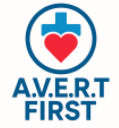General Safety & Awareness Tips
Staying vigilant and proactive can prevent harm before it escalates. These tips are applicable for everyday life, workplaces, schools, and community settings:
1. Observe Carefully
-
Pay attention to subtle changes in behavior, mood, or routines in yourself and others.
-
Notice environmental hazards, unsafe practices, or overlooked risks—like a “bottle teetering on aisle 7.”
2. Trust Your Instincts
-
If something feels off, it probably is. Don’t dismiss early warning signs.
-
Validate your observations and consider safe ways to act.
3. Communicate Clearly & Respectfully
-
Ask open-ended questions to understand concerns or risks.
-
Share observations with empathy, not judgment, and focus on safety and solutions.
4. Act Promptly & Appropriately
-
Intervene directly when safe, or connect the person at risk with professional help.
-
Know your limits and escalate to trained responders or support systems as needed.
5. Build Awareness Networks
-
Encourage shared vigilance in schools, workplaces, and communities.
-
Engage in teamwork—harm prevention is strongest when multiple people are looking out for each other.
6. Prioritize Self-Care
-
You can’t help others if you’re overwhelmed or burned out.
-
Practice resilience strategies and seek support when needed.
7. Keep Learning
-
Attend workshops, webinars, and training to refine your skills.
-
Stay informed about emerging risks, trends, and prevention strategies.
Remember: Prevention starts with awareness. By noticing risks, acting early, and connecting others to support, you become an essential part of a culture of safety—protecting yourself, your community, and the people you care about.




